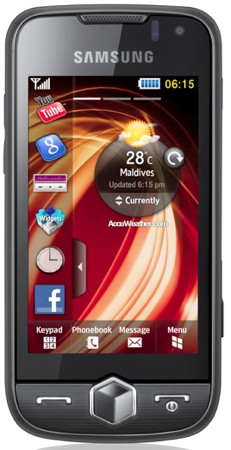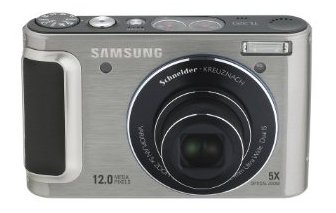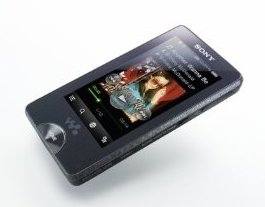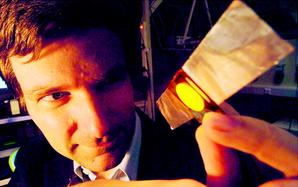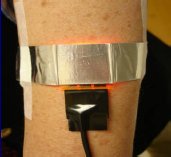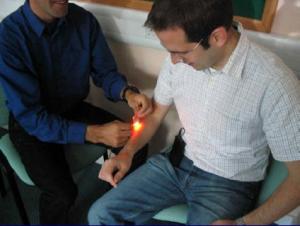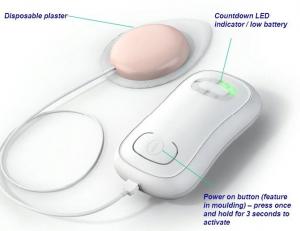 Lumicure is a UK startup with on OLED and ILED based photo-therapy, to treat several skin diseases such as skin cancer or acne. We first heard of Lumicure back in 2006. Lumicure's CEO, Ian Muirhead, has been kind enough to answer a few questions we had.
Lumicure is a UK startup with on OLED and ILED based photo-therapy, to treat several skin diseases such as skin cancer or acne. We first heard of Lumicure back in 2006. Lumicure's CEO, Ian Muirhead, has been kind enough to answer a few questions we had.
Lumicure is a spin-out from St Andrews University and Tayside Health Board (THB). Lumicure has developed light emitting (OLED or Inoraganic-LED) sticking plasters for treating skin cancer. They are also looking to adapt innovative lighting
technologies into cosmetic applications.
Photo-Dynamic
therapy basically means that you apply a certain cream (ALA cream) to the tumor
(or the area you want to treat). This creates a daughter compound PP9 which is
a light-sensitive material - when light is present, it will release singlet
Oxygen which will destruct the tumor.
The current way to do photo-therapy involves large machines, which take a lot of space and several people to manage. A small plaster like Lumicure's will enable a much simpler, disposable solution, which is also cheaper.
Q: The last we heard from you guys was towards the end of 2008. Any updates? Will it require a lot of testing before it actually reaches the market?
We are in the final phase of developing a production device to medical device qualified standards. We hope to have this on the market later in the year. The original research trials which were conducted between St Andrews University and Ninewells Hospital Dundee has been recently published in the british Journal of Dermatology.
Q: We know you're focusing on a cure for cancer, but the technology will work for other skin diseases. Have you begun testing on these as well?
We are looking at a range of applications of our ambulatory light sources in both PhotoDynamic Therapy (PDT) and Photo Therapy. We will begin testing these later this year but for competitive reasons I cannot go into details.
Q: Why did you choose OLEDs? Because you can make them flexible? or are there certain light properties that are appealing?
Lumicure is interested in a variety of light sources for its products including OLEDs and ILEDS. As well as the core light source we have worked extensively in innovative packaging solutions to make them suitable for ambulatory PDT and Phototherapy applications.
Q: There's a second UK company, Polymertronics, that's working on a similar solution (but they are using an array of small OLEDs to create a larger device) - can you comment on their technology?
Following
on from the original development at Ninewells Hospital and St Andrews
University, Lumicure continues to be leading pioneers in the field of ambulatory
PDT. We choose not to comment publically on followers technologies but instead
focus on bringing our first product to market and developing our second
generation device.
Q: Will you require more funding? The last financing round was in the beginning of 2008...
We would anticipate raising additional funding for market expansion in 2010.
Thanks Ian, and good luck! This is one novel usage of OLEDs, and I hope you'll manage to bring a successful product soon.
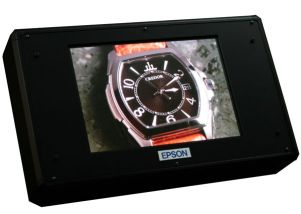 Espon 14-inch Inkjet processed OLED
Espon 14-inch Inkjet processed OLED


